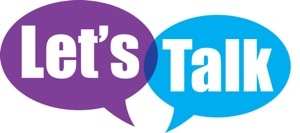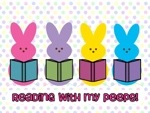This week was a frustrating one in my classroom.
I don’t know if it was the full moon, the anticipation of a four day weekend ahead for my students, or poor teaching on my part, but things just did not go as planned. More than likely it was a combination of all three.
When things don’t go well in my classroom, it’s hard not to take it personally. I’m my own worst critic and I want everything to go perfectly all the time. This year, my goal is to focus on the positive and to look at things in terms of a continuum, not an end game. Don’t get me wrong, I still want everything to go perfectly, but I’m learning to reflect in a way that opens doors rather than shuts them.
So – what went wrong this week? In my last blog I wrote about putting my students into reading partnerships a la Lucy Calkins. Their first meeting – interviewing each other, thinking of a partnership name and drawing a logo was a great success. I should state upfront that assigning reading partners is not something I’ve been comfortable with in the past. I believe strongly in choice – kids who choose their own partners tend to be more invested in the work. But, I wanted to try this. There are benefits to putting “like” readers together, and giving students the chance to work with someone new. They can read the same books and talk about them together. I envisioned lofty conversations and highly engaged students sharing their love of reading with each other. I mean, thats what happened in the readers’ workshop book right?!
But here’s what I saw in my classroom this week. Bickering about where to sit, awkward silence when it came time to discuss novels, refusal to participate, tears, hurt feelings and anger. My response was to call everyone back to the rug, ask what worked and what didn’t work and send them out to try again. Some did better, most did not. Why didn’t it work? I mean, it’s mid way through the year, I feel like I’ve established a community of readers and a safe place to talk. We’ve done group work and partner work all year. It was definitely time to pull back and reflect and here is what I came up with:
1) no matter how many times we’ve discussed books as a class, my students needed more than just a list of things to talk about. (Your sticky notes, characters, plots, predictions). They needed sentence starters and more structured conversations. I was way too ambitious. In her book Writing about Reading, Janet Angellilo says “carefully scaffold students towards accountable talk, that is including everyone in the conversation, staying on topic, keeping with the text and so on”. P5. But there’s so much hidden in that “and so on”. This week I started thinking about WHY my students were having such a hard time talking to each other and sharing their ideas about books.
2) I teach in a Title 1 school where 50% of my students are in the Federal Free and Reduced Lunch program. I have students who are homeless, students whose parents are on drugs, students whose lives are anything but stable. I realized this week that I needed to look outside of my own middle class values and realize that many of my students do not have good conversational models at home. More often than not they are likely to witness arguments rather than conversations. If they do not have two parents at home, their conversational models are more likely to be the TV or radio. My own child attends my school and is in my grade level. Both his parents have post graduate degrees, and he hears us talk about books and current events on a regular basis. More often than not we sit around the dinner table and talk about our respective days. I’m sure this happens in the homes of some of my students, but not all. The children who have this experience are already so far ahead of those who don’t. They know how to interact politely and respectfully with others. They know how to share differences in opinions without offense. They can CONVERSE and LEARN from each other. How do I give my students what my son has learned in 9 years of life when I have such little time with them?
3) The answer is……with all that I have in the time that I’ve got.
I CANNOT not do this. I’ve been searching online for a curriculum that teaches accountable talk. I’ve found Pinterest boards and sentence stems. This week I plan to implement all that I can and have students talking to each other as much as I can. We have a lot of work to do.
So, I will not abandon my reading partnerships yet. In fact, I have made it my goal to get those kids talking to each other about books in a respectful manner if it kills me! We will bond, we will practice, we will talk, we will learn. From each other.
Please let me know if you’ve found anything that has helped your students practice the art conversation.




